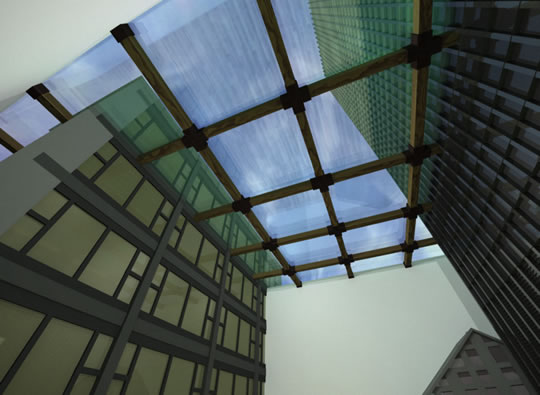
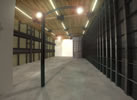
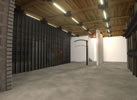
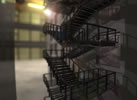
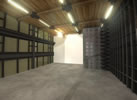
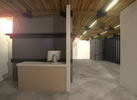
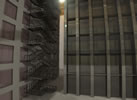
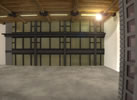
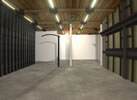
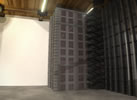
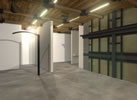
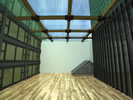
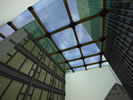
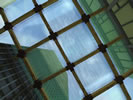














We have become accustomed to seeing buildings made of glass and steel that rise over one hundred stories into the air, that can weigh as much as a hillside and withstand hurricanes. We are not so accustomed to seeing such buildings framed or contained in any way. Alexander M. Lee has painstakingly reconstructed the buildings from the corner of Monroe and Wabash in Chicago and placed them in and around the Waymaker Gallery- much to the dismay of our neighbors.
With every art show there is some reframing of context, usually a work is removed from its natural setting and placed in the neutralized space of the gallery- full of white walls and even lighting. This is not that kind of show. Lee has brought the natural setting itself into the site of the exhibition to create a show that requires a complicated conceptual double-take. While on one level the buildings are framed by the gallery, they also frame the gallery in return-- surrounding it from the outside, overtaking our offices, and being visible from blocks away as the most dominant feature of the gallery. On the inside, however, the buildings cling to the walls, staying close to the anticipated and traditional site of our gaze. The buildings follow the layout of the gallery even as they fight to overcome its influence. A lampost on the ground level is the only isolated object in the exhibition. Lit, rather than providing light, it stands as perhaps the most salient symbol of this exhibition even as it remains its most subdued feature.
Alexander M. Lee lives and works in Chicago, USA and is currently pursuing an MFA from the School of the Art Institute of Chicago. He works in a variety of formats but primarily uses photography and new media. Much of his work deals with our estranged relationship to pictures and the alienation caused by technology mediating so much of our experience. The unfocused line that divides truth and fiction is the site his work tends to occupy, this is his first large scale sculptural installation.